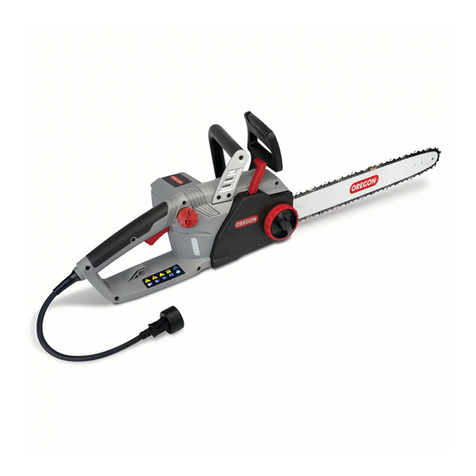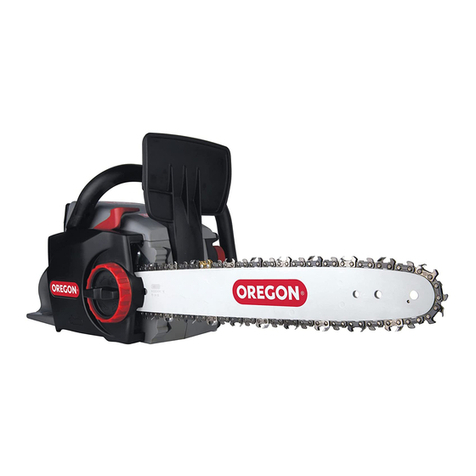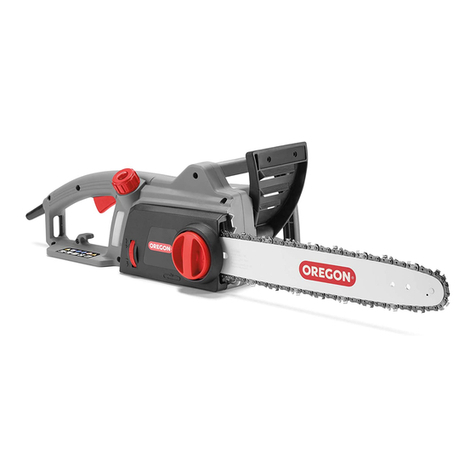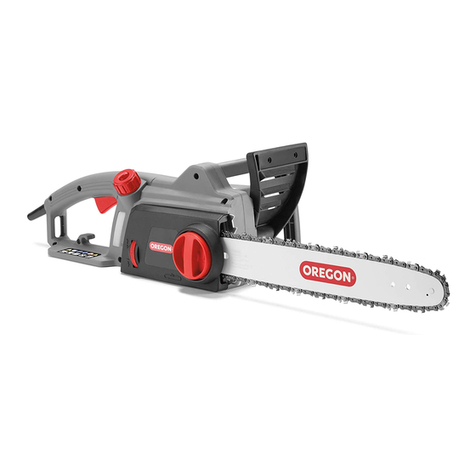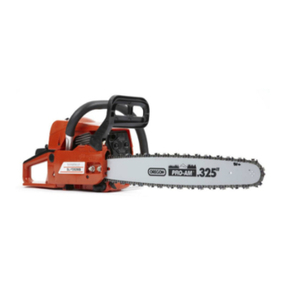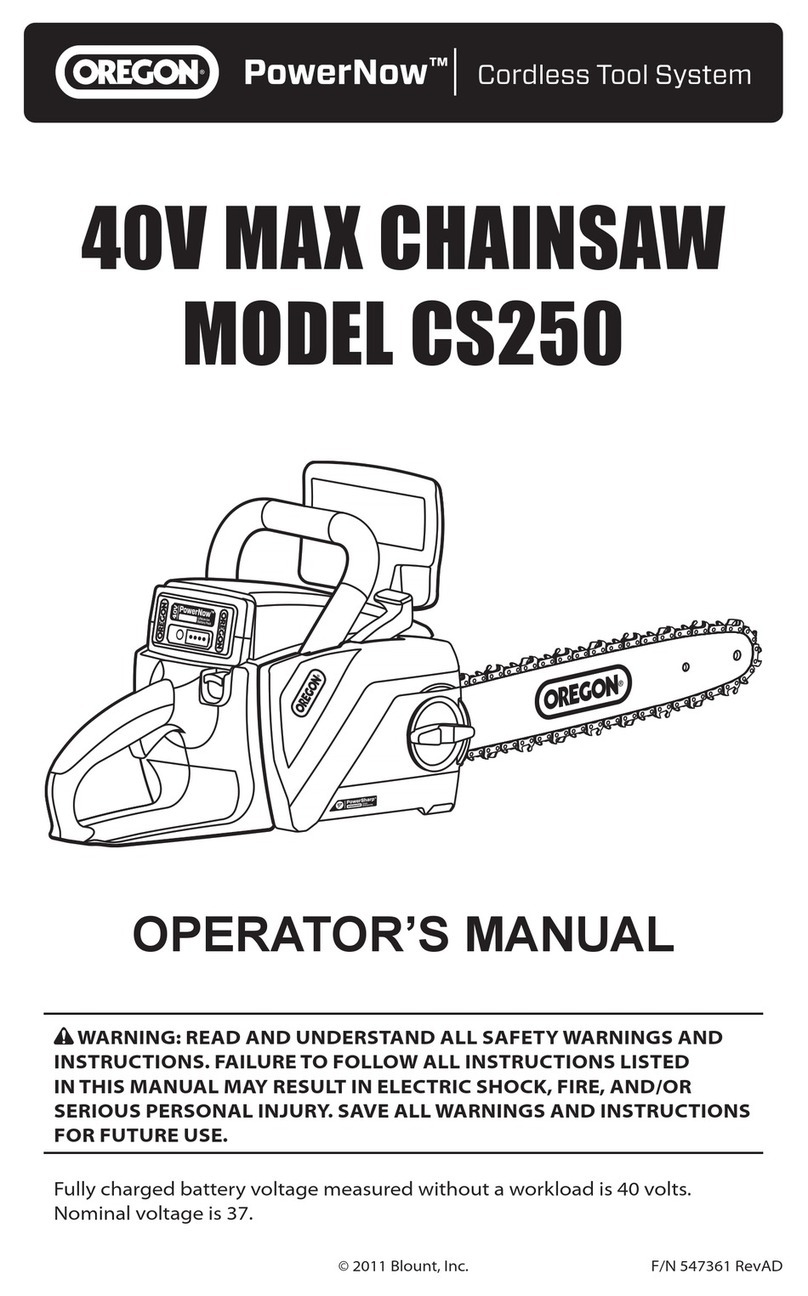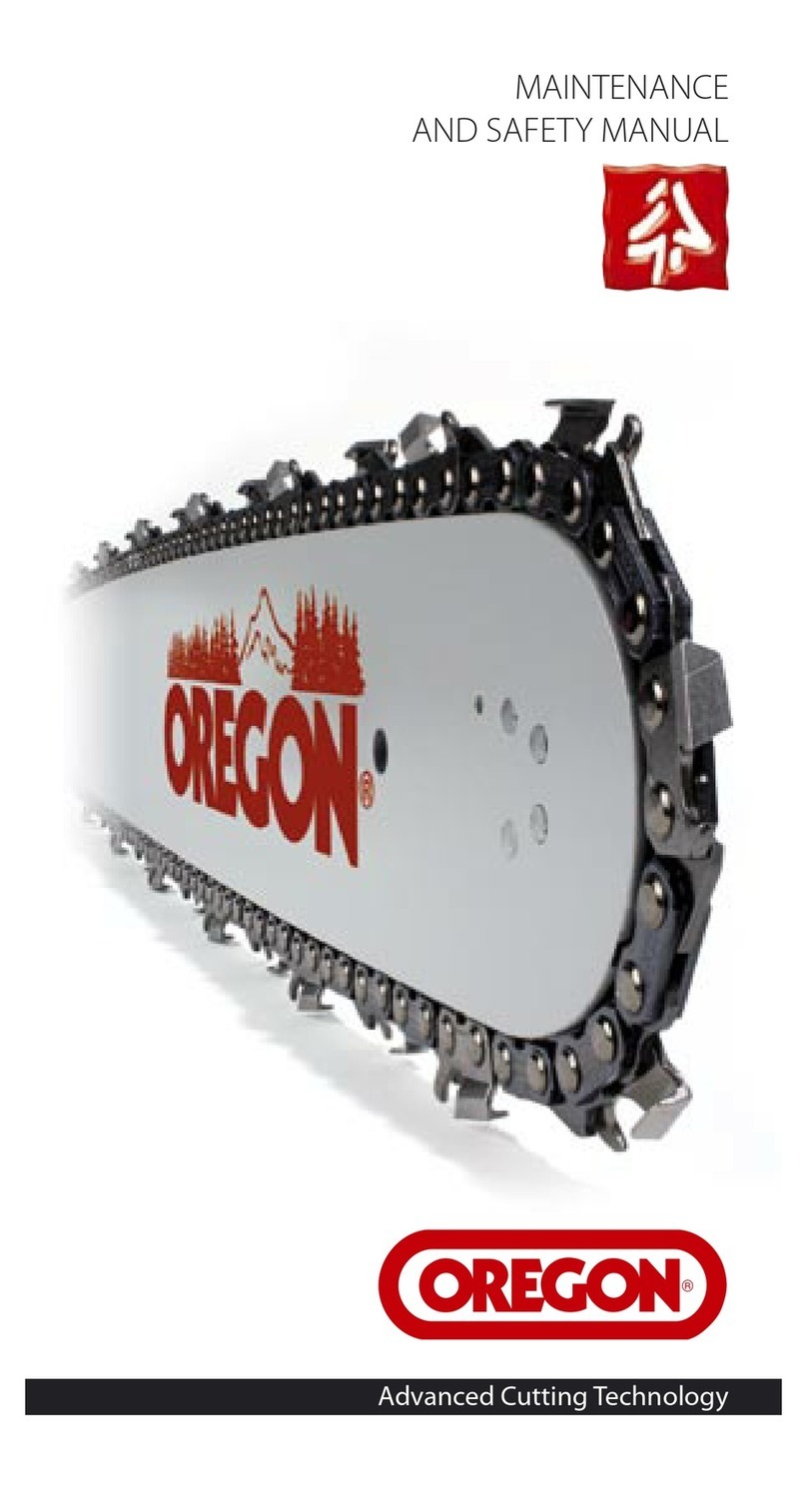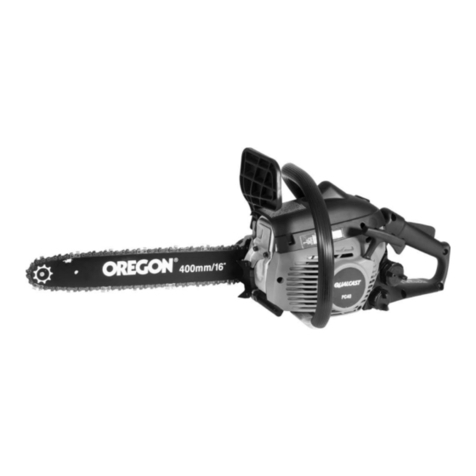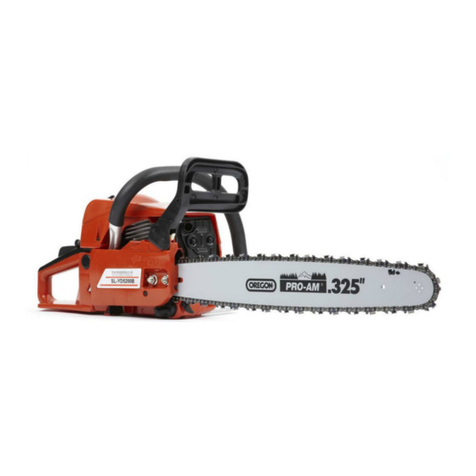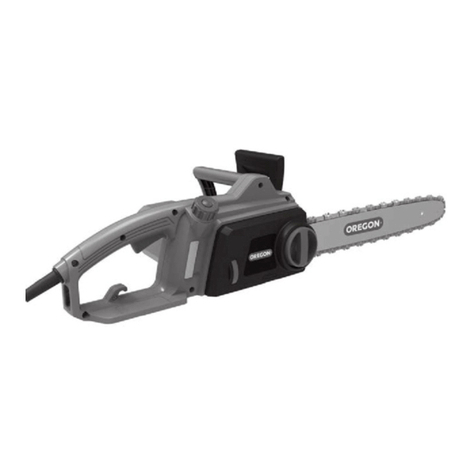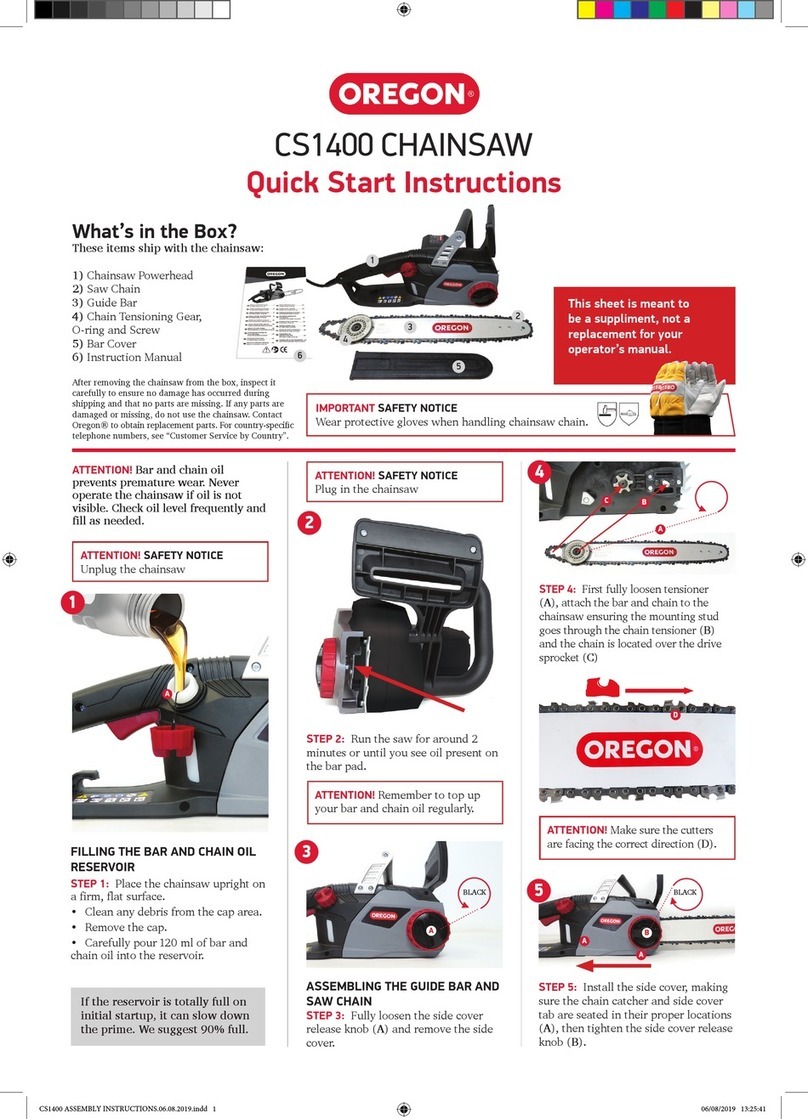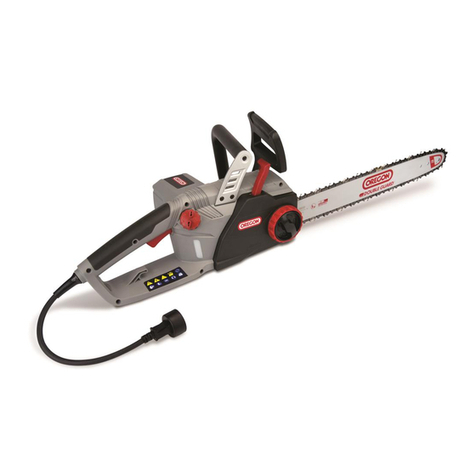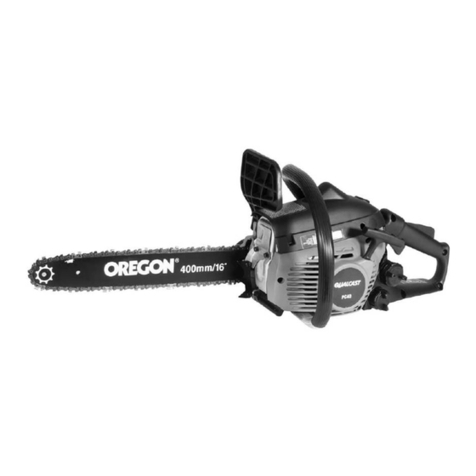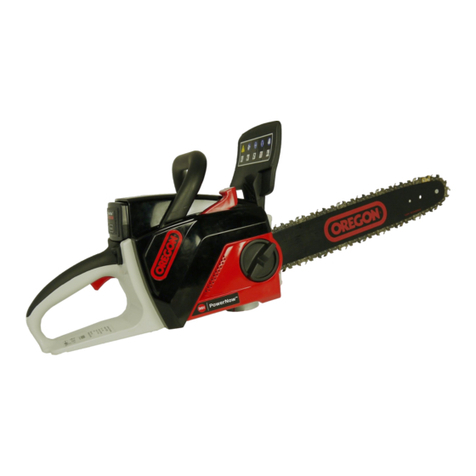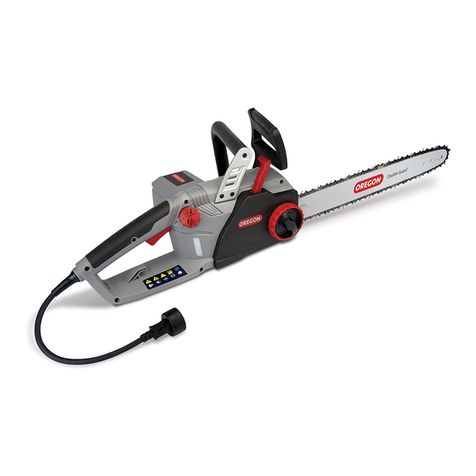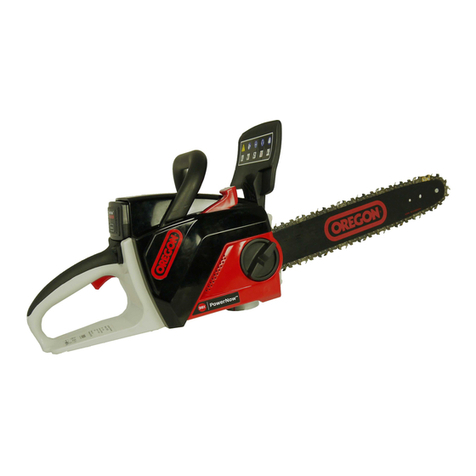SAFETY
INSTRUCTIONS
Read and
understand
the
owner's
manual and labels
affixed
to
the
chainsaw. Learn
its
application
and
limitations
as
well
as
the
specific
potential hazards. Retain these
instructions
for
reference.
• Use safety footwear, protective clothing and a helmet with eye and ear
protection.
• Do
not
operate the chainsaw if you are tired,ill or under the influence of
alcohol or drugs.
• Do
not
smoke when using the chainsaw and ensure caution when handling
fuel. We recommend you fuel the saw at least 3m away from where you wish
to work in case any spilt fuel ignites when starting the engine.
• Ensure that bystanders, children and pets keep well away when starting or
cutting - at least 10m.
• Inspect the chainsaw , and in particular the bar and chain, before use for any
worn or damaged parts. Do not use until the parts are repaired or replaced.
• Before starting the engine make sure the chain is not in contact with anything
and have a clear work area and secure footing.
• Hold the chainsaw firmly with both hands when using and keep all parts of
your body away from the machine. Put the scabbard on for transportation.
• Always carry the chainsaw with the engine stopped, the bar and chain to the
rear and the muffler away from your body.
• Beware of small branches and saplings whipping back towards you as you
cut. When cutting a limb which is under tension, be alert to the possibility of
the limb springing back when the tension is released.
• Do
not
cut in high wind, bad weather or poor visibility. Check the tree for
dead branches which could fall during operation.
• NEVER operate the chainsaw in a tree unless you are specially trained to
do so.
Always
shut
off
the
engine
before
setting
it
down.
A
word
about
KICKBACK
-
Kickback can occur when the nose or tip of the guide bar touches an object, or
when the wood closes in and pinches the saw chain.
Do not rely solely on the safety devices built into your chainsaw.
• Keep a good grip on the saw with both hands - this will help you mantain
control should kickback occur.
• Ensure thatthe area in which you are cutting is clear and free from obstructions
so that the tip does not make contact with another log or obstruction.
• Always cut at high engine speeds and do not overreach or cut above
shoulder height.
• Follow the manufacturer's guidelines for sharpening and maintaining the
chain and only use replacement bars and chains specified.
Page
3
